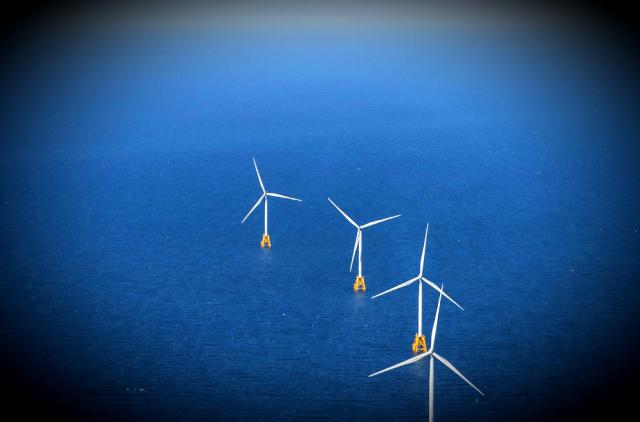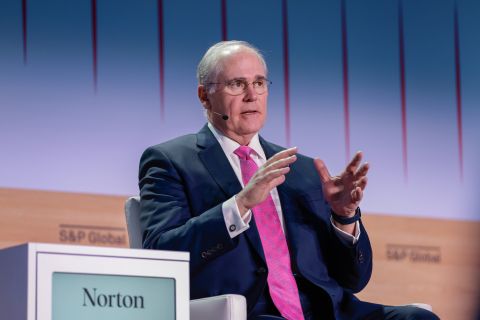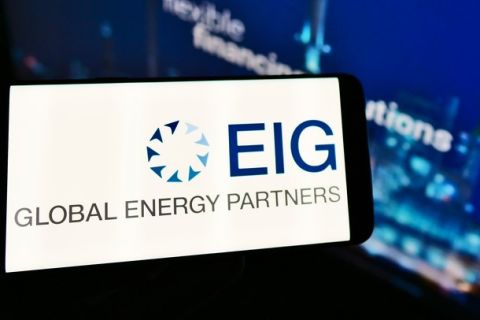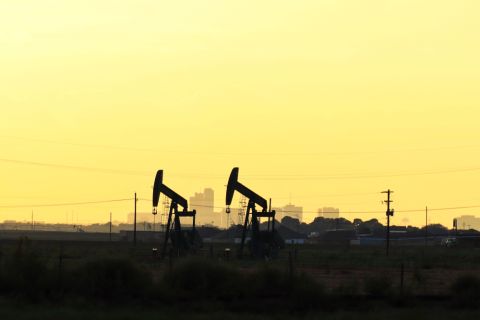
About 22,000 MW of generating capacity is ‘reasonably foreseeable’ in the waters of the Atlantic—enough to supply more than 10 million homes, says a U.S. federal agency. Pictured is the Block Island Wind Farm—the first commercial offshore wind farm in the U.S., located off Rhode Island in the Atlantic Ocean. (Source: Orsted)
U.S. investment in offshore wind power is predicted to rise from nothing 10 years ago to a level that nearly matches spending on offshore oil drilling, as an energy source established in Europe grows in popularity across the Atlantic.
Offshore wind projects are on course for about $78 billion in capital spending this decade, compared with the $82bn planned for U.S. offshore oil and gas development, according to energy consultancy Wood Mackenzie.
In the decade that began with the 2010 Deepwater Horizon drilling disaster, U.S. offshore oil development received $154bn of investment. The figure for commercial-scale offshore wind was zero.
Offshore wind has benefited from targets set by east-coast states for clean electricity. About 22,000 megawatts (MW) of generating capacity is “reasonably foreseeable” in federal waters of the Atlantic, the Bureau of Ocean Energy Management (BOEM) said—enough to supply more than 10 million homes.
“It’s huge. The last three, four years have obviously been a very positive development,” said Thomas Brostrom, CEO of North America offshore at Orsted, the Danish wind group.
The outlook for U.S. offshore oil is stagnant even as the Trump administration attempts to open new areas for drilling. With good inland oil supplies, high exploration costs and worries about the environmental impact, offshore production is likely to rise by only 200,000 bbl/d in this decade, the Energy Information Administration forecasts.
BOEM is accepting public comments on Vineyard Wind, which would install as many as 100 turbines up to 837 ft tall in waters south of Martha’s Vineyard island in Massachusetts. Developed by Copenhagen Infrastructure Partners and Avangrid, a subsidiary of Spain’s Iberdrola, the 800 MW project would be the first large-scale offshore wind farm in the U.S.
Last week, Dominion Energy finished installing a two-turbine pilot 27 miles off Virginia, a prelude to a 2,600 MW full-scale project scheduled to start construction in 2024.
New York state aims to have 9,000 MW of capacity by 2035. New Jersey has committed to 7,500 MW the same year and last month set aside land for a “wind port” to assemble turbines.
Virginia’s governor in April signed the “Clean Economy Act,” which requires at least 5,200 MW of offshore wind by 2034. All three states are led by Democrats—the party has made climate policy central to its agenda.
“By and large, this is a northeastern phenomenon, driven by northeastern states seeing cost declines in Europe and being very interested in bringing offshore wind to their shores,” said Max Cohen, a Wood Mackenzie analyst. “And these projects will be close to demand centers like Boston, New York and all these coastal cities.”
Offshore wind projects require high upfront spending: a 250 MW project costs about $1 billion, according to the International Energy Agency. However, the cost is likely to fall more than 40% over the coming decade, the agency said.
A few years ago, the lifetime electricity prices of the first offshore wind contracts were in the range of $150-$170 a megawatt-hour (/MWh). The more recent Vineyard Wind and Revolution Wind — a Rhode Island project also backed by Orsted—had prices between $65-$80/MWh, Cohen said.
Yet the projects also face uncertainty in the form of delays to permits and local resistance in some places.
Vineyard Wind’s progress was slowed after BOEM required a second environmental review that examined the cumulative impact of all offshore projects. The federal agency has 16 active wind leases in Atlantic waters. “Investors continue to question when or if U.S. offshore wind will finally receive the green light,” Goldman Sachs said.
More delays could also mean the project misses out on federal tax credits for wind, which are due to expire at the end of 2020. Avangrid said it expects a final decision to be issued by then, a year later than originally expected.
The first project proposed to serve New York, Orsted’s 130 MW South Fork Wind Farm, has provoked beachfront homeowners to demand that the company reroute a power cable away from their neighborhood.
Fred Zalcman, Orsted’s head of government affairs, said: “We’ve done our best to identify alternative cable routes, trying to minimize environmental harm or local economic dislocation. And this route was clearly identified as superior.”
Offshore oil drilling has also proved unpopular outside its traditional confines of Texas and Louisiana. A federal plan floated in 2018 to offer oil and gas leases in the Atlantic and Pacific oceans was opposed by coastal governors, including Republicans.
The most recent region-wide sale of oil leases in the Gulf of Mexico raised $93 million for 397,000 acres, roughly half of what was paid in the previous auction.
BOEM’s latest wind lease auction raised $405 million from bidders for three areas that totaled 390,000 acres.
Recommended Reading
Global Partners Buys Four Liquid Energy Terminals from Gulf Oil
2024-04-10 - Global Partners initially set out to buy five terminals from Gulf Oil but the purchase of a terminal in Portland was abandoned after antitrust concerns were raised by the FTC and the Maine attorney general.
ONEOK CEO: ‘Huge Competitive Advantage’ to Upping Permian NGL Capacity
2024-03-27 - ONEOK is getting deeper into refined products and adding new crude pipelines through an $18.8 billion acquisition of Magellan Midstream. But the Tulsa company aims to capitalize on NGL output growth with expansion projects in the Permian and Rockies.
EIG’s MidOcean Energy Acquires 20% interest in Peru LNG
2024-02-08 - On top of acquiring a 20% interest in Peru LNG, MidOcean Energy is also in the process of acquiring interests in four Australian LNG projects.
Dallas Fed Energy Survey: Permian Basin Breakeven Costs Moving Up
2024-03-28 - Breakeven costs in America’s hottest oil play continue to rise, but crude producers are still making money, according to the first-quarter Dallas Fed Energy Survey. The situation is more dire for natural gas producers.
SCF Acquires Flowchem, Val-Tex and Sealweld
2024-03-04 - Flowchem, Val-Tex and Sealweld were formerly part of Entegris Inc.





